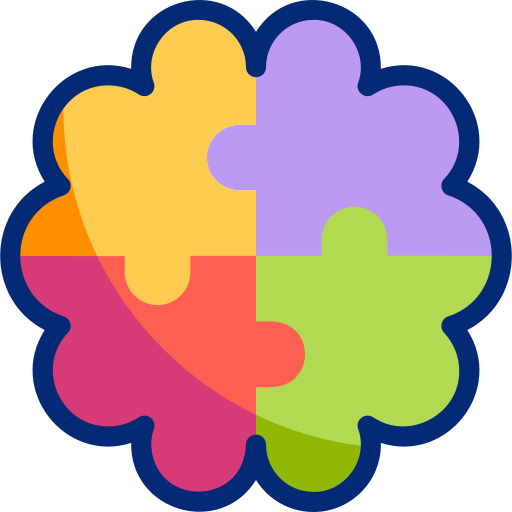Teach Them Who They Are: Why Self-Awareness Beats Silence Every Time

Parents whisper it like a confession:
“He’s a bit different.”
“She’s… quirky.”
“We don’t want to label her.”
And I always think, you’re not protecting her from the label — you’re protecting yourself from the truth.
Because the truth is more complicated. It means admitting the parenting manual you were handed doesn’t apply. It means letting go of the fantasy of “typical.” But the cost of silence is high. When a child doesn’t understand their own wiring, they grow up feeling broken.
That boy who changed everything
About ten years ago, when I was teaching a group of gifted kids, there was one boy who had my heart from day one. Brilliant mind, encyclopaedic memory, completely undone by a buzzing light or a missing pencil. His mother was hanging by a thread — anxious, exhausted, permanently apologetic. His dad was all brittle irritation and short fuses, because he genuinely couldn’t make sense of what was happening.
I remember sitting in that parent meeting thinking, this is autism. Clear as day. I didn’t need a crystal ball — just ten years of seeing the same story play out with different names.
I told them gently that getting an assessment might help. His mom looked terrified. His dad bristled. “We don’t want to label him,” she said.
So I said, “He’s not going to wear it on a slate around his neck. But at least you’ll know which map you’re using. Right now you’re navigating the Alps with a beach towel.”
She laughed through her tears, but she listened.
A few months later, she called me, voice trembling, and said, “You were right. It’s autism.”
Then she said something I’ll never forget: “It’s like someone turned the lights on in our house.”
Her husband was suddenly softer — the quirks that once looked like defiance now made sense. She could finally stop Googling “how to parent a difficult child” at 2 a.m. and start learning him. Their son relaxed, too, because the adults finally saw the same movie he’d been watching all along.
That’s what knowledge does — it replaces chaos with context.
James, my walking crash course in real-life neurodiversity
I’ve always been upfront with James about how his brain works — and mine, for that matter. He’s known from early on that he processes the world differently. We’ve talked about why he finds noise unbearable but silence suspicious, why words sometimes overflow and why shutting down isn’t laziness, it’s survival.
We’ve had the meltdowns. The thrown chairs. The teachers who thought they were helping by saying, “James just needs to try harder.” And we’ve had the nights where I sat beside him, explaining that he wasn’t bad, he was overwhelmed — and that the grown-ups didn’t always get it.
Honesty didn’t make him fragile. It made him powerful. He learned to say, “This is what helps me.” He learned that needing time alone wasn’t antisocial; it was a sign of self-regulation. And when the world pushed too hard, he learned to say, “Enough.”
That’s self-awareness. That’s self-advocacy.
And it started with me refusing to pretend he was just like everyone else.
Why silence is louder than labels
Therapist Jaime Heidel at Open Doors Therapy talks about what happens when autistic people mask — when they learn to hide their real reactions just to fit in. Over time, they lose touch with what’s real for them. They stop trusting their own signals. It’s like living in a house where the smoke alarm is always going off but no one else hears it.
That’s why self-awareness isn’t optional. It’s the lifeline.
It’s the moment a child can say, “I’m not being dramatic, I’m overloaded.”
If you teach a child to recognise that, you’ve given them the foundation for everything else — emotional regulation, communication, even friendships.
Teaching self-awareness without making it a lecture
I’ve learned that self-awareness can’t be taught like maths or grammar — it’s caught, not taught. Kids need to see it in action.
So I talk about it, openly. I’ll say things like, “You know that feeling when your brain’s overheating and you want to shout? That’s your body sending a memo — listen to it.” I tell them when I get it wrong, too. When I snap because I’m overstimulated, I apologise and say, “That was my nervous system talking.” That kind of honesty teaches more than any neat little worksheet.
And when they get it right — when they say, “I need a break,” or walk away before it all tips over — I make a point of noticing. Because that’s how you teach a child that managing themselves isn’t weird or weak. It’s wisdom.
The classroom and the wider world
When I was teaching full-time, I used to run what I called my “chaos lessons.” I’d crank up the noise, turn on a fan, have kids walk around while others were trying to focus — the works. Then I’d stop and ask: “How did that feel?”
The neurotypical kids would look at me with wide eyes and say, “How does anyone learn like that?” And the neurodivergent ones — my beautiful, overstimulated, misunderstood kids — would just give this small, knowing smile. Finally, someone showed the others what normal feels like.
That’s how empathy starts. Not from posters about kindness or PowerPoints on inclusion — but from shared discomfort. From kids feeling what another nervous system feels like for a change.
If I could bottle that moment — the one where understanding replaces judgement — I’d hand it out like oxygen. Because that’s the heartbeat of real inclusion: when kids stop trying to fix each other and start seeing each other.
The ADHD angle — and why it applies to all of us
ADDitude Magazine nails it: self-awareness isn’t a personality trait, it’s a practice. You build it the way you build muscle — slowly, awkwardly, with a few pulled emotional hamstrings along the way.
Their six-step model is gold, not because it’s fancy, but because it’s real. It’s what I’ve seen work again and again — for my students, for James, and honestly, for myself.
- List strengths and challenges side by side — no shame, just truth.
This is the part where most parents freeze. We’re so conditioned to focus on fixing that we forget to name what’s already brilliant. Sit with your child and write both of them down. “I’m amazing at remembering facts, but I forget instructions.” “I’m creative, but transitions wreck me.” The goal isn’t balance — it’s honesty. When kids can see their strengths and challenges on the same page, it stops feeling like a deficit and starts feeling like data. - Teach rights and supports — knowledge beats anxiety.
I can’t tell you how many teenagers I’ve met who didn’t know they were legally entitled to accommodations. No one told them. They thought asking for help was cheating. When you teach a child what support looks like — whether that’s extra time, noise-cancelling headphones, or just a teacher who doesn’t hover — you’re not spoiling them. You’re teaching self-protection. Anxiety thrives in ignorance; confidence grows in clarity. - Rehearse asking for help.
Yes, literally rehearse. In the car. Over breakfast. Before school. The first time a kid tries to self-advocate, it often sounds like either a whisper or a rebellion. Practice scripts.
“Excuse me, can we go through that again?”
“I find it hard to focus when there’s noise — could I move to the back?”
It feels awkward at first. That’s fine. It’s a life skill, not a personality transplant. - Let them try it out in safe spaces.
School isn’t always safe for trial runs — too many variables, too many egos. Start at home. Let your child tell you what they need, even if you disagree. Validate it before you correct it. If they say, “I can’t handle dinner right now,” don’t launch into a lecture about family time. Say, “Okay. Tell me what would help.” The more they practice in small ways, the easier it becomes in the wild. - Reflect and refine.
This step gets skipped all the time. We praise the attempt, but never unpack the outcome. After they’ve self-advocated — successfully or not — talk about it. What worked? What didn’t? What might you say next time? Reflection isn’t punishment. It’s calibration. It teaches them that getting it wrong doesn’t mean shutting down — it means trying differently next time. - Keep applying it until it sticks.
Because it will fall apart sometimes. They’ll freeze. They’ll backslide. You’ll lose patience. That’s all part of the process. The only way to make self-awareness stick is to keep using it when life gets messy. That’s when it becomes instinct — the voice that says, “I’m not bad, I’m overloaded.”
It’s basically life skills disguised as emotional literacy. You can adapt it for any child, any age, any brain. Even adults could use the refresher — God knows I’ve had to give myself pep talks that sound suspiciously like the ones I used to give my learners.
Because the truth is, we all need the same thing: a safe space to say, “This is how I’m wired, and here’s what helps me thrive.”
The fear that keeps parents quiet
Every parent I’ve ever met has, at some point, been scared of the label. It feels permanent, heavy, like an invisible stamp on your child’s future. But here’s the thing: your child already knows they’re different. What they don’t know — until you tell them — is why.
And kids without a “why” usually invent one.
“I’m stupid.”
“I’m naughty.”
“I’m broken.”
That’s what happens when we don’t give them language.
Self-awareness doesn’t limit them. It lets them exhale. It says, “You’re not the problem — you just have a different manual.”
Start here
Start with language. Replace “label” with “understanding.”
Say things like, “Your brain learns best through movement,” or “That’s your sensory system talking.”
Use different statements: “Because my brain is more visual, I need diagrams.”
And when they advocate for themselves — even if it’s inconvenient — meet it with respect, not irritation.
For teachers: build reflection into your day. Ask students what helped them focus, what didn’t. You’ll learn more from that than any staff meeting PowerPoint.
The truth I’ve seen, over and over
Every time I’ve told a parent the truth — that their child is likely autistic, ADHD, dyslexic, or something else entirely — I’ve seen the same storm of fear and relief. But when they push through it and start learning instead of denying, their homes become calmer. The kids get lighter. The fights fade.
And when children grow up knowing themselves — not hiding, not apologising — they navigate life with an internal compass that no system can take from them.
Because here’s the secret:
The label doesn’t define the child.
It just explains the manual.
And once you know the manual, you can finally stop blaming the machine.
Five ways to start the conversation (for parents)
1. Say it before the world does.
Don’t wait for the teacher, the therapist, or the kid next door to name it first. You don’t have to give a TED Talk — just start with, “Your brain works differently, and that’s something we can understand together.”
2. Ditch the “L” word.
Forget “label.” Call it language. When you explain a diagnosis, you’re not branding them — you’re giving them the words to explain who they are.
3. Use difference statements.
From ADDitude’s idea bank: “Because my brain is more visual, I learn best with pictures.” Try your own versions: “Because my brain is sensitive to sound, I need breaks from noise.” It turns “problem” into pattern.
4. Let them see your humanness.
Model it. “I get overwhelmed when there’s too much happening, so I take a few deep breaths before I answer.” When they see you self-regulate, they learn it’s normal to need to.
5. Celebrate the blueprint.
Every quirk tells a story. The goal isn’t to fix the blueprint; it’s to learn to build with it. Find what works and double down on that. Self-awareness starts with acceptance — and acceptance starts with you.
“Don’t wait for a meltdown to become a mirror. Talk about who they are when the house is calm and everyone’s still breathing.”
How to teach self-awareness without making it weird (for teachers)
1. Make reflection part of the routine.
Slip it in casually: “What helped you learn today?” “What made it harder?” Treat reflection like water breaks — regular, necessary, and unremarkable.
2. Run the empathy simulation.
Borrow from Learning Village: create a “distraction storm.” Turn on multiple sounds, add interruptions, then ask, “How did that feel?” Suddenly, the whole class understands sensory overload better than any lecture ever could.
3. Praise curiosity, not compliance.
When a child questions a rule or asks for an alternative way to learn, don’t shut it down. That’s not defiance — it’s emerging self-advocacy.
4. Teach the scripts, not the silence.
Use Adina Levy’s Play.Learn.Chat method — teach, model, notice. Give them words like, “I need a quiet space,” or “Can we write instead of speak?” Then celebrate it when they use them.
5. Build safety before strategy.
No one can self-reflect in fight-or-flight. Create environments that feel calm, predictable, and kind. Only then can kids look inward without bracing for impact.
“Kids can’t be mindful while fluorescent lights are microwaving them. Fix the environment before you fix the behaviour.”
About the Author
Nicola Killops is an education and media specialist, neurodiversity advocate, and the founder of NeuroParentingHub — a space where lived experience meets straight-talking truth. She’s spent more than two decades teaching, writing, and helping parents decode the real-world chaos of raising differently wired kids.
Nicola’s work bridges the gap between theory and survival: she’s taught gifted children, supported families through diagnoses, and raised her own profoundly neurodivergent son — who taught her more about human behaviour than any postgraduate course ever could.
When she’s not writing about brains, labels, and emotional avalanches, she’s co-building Render-Killops, a future-facing education and AI project with her partner, Justin Render.
“If I’ve learned anything, it’s this: the kid you’re trying to ‘fix’ probably just needs you to see them properly.”





